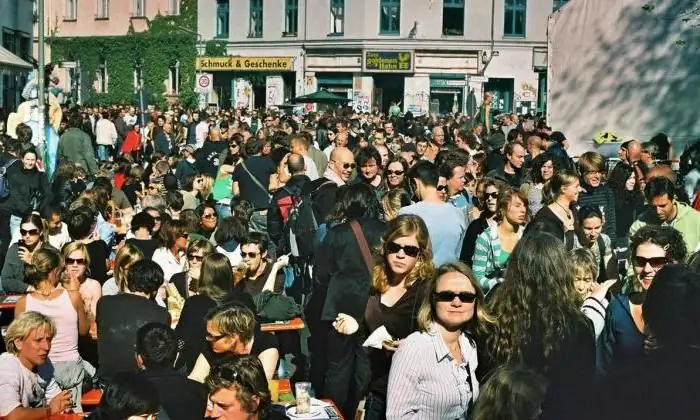- Author Henry Conors [email protected].
- Public 2024-02-12 02:54.
- Last modified 2025-01-23 09:07.
The North Caucasian Republic was formed in Soviet times from the historical territories of the neighboring peoples of Kabarda and Balkaria, according to the principle of a good neighbor is better than a distant relative. Since Kabardians and Balkars are not kindred peoples and their languages belong to different language groups. The population of Kabardino-Balkaria has been gradually growing over the past three years, mainly due to natural growth.
General information

The Republic is located on the northern slopes of the Greater Caucasus, in its central part. Neighbors with such Russian regions as the Stavropol Territory, Karachay-Cherkessia and North Ossetia-Alania, in the south it borders on Georgia. Covers an area of 12,500 sq. km.
The population density of Kabardino-Balkaria is 69.43 people/km2 (2018). It ranks 10th in this indicator in Russia. Residents live mostly in cities (Nalchik, Baksan,Prokhladny), in the flat and foothill areas, in the territory located above 2500 meters above sea level, no one lives.
Establishment of the Republic
Two neighboring peoples, at the whim of the Soviet government, existed first in one autonomous region (since 1922), and then as part of one autonomous republic (since 1936). Even the "epidemic of separation" after the collapse of the USSR could not destroy this union.
From 1944 to 1957 the republic was called the Kabardian Autonomous Soviet Socialist Republic, because the Balkars were deported to Kazakhstan and Central Asia. In 1956-1957, the decision to repress them against them was declared illegal. The Balkars were allowed to return to their homeland. The republic again became Kabardino-Balkaria, the two Caucasian peoples again began to dominate in the national composition of the population.
History of joining Russia

Even the history of joining Russia is completely different for Kabardians and Balkars. The Kabardians fought for their independence from 1763 to 1822. When Russian troops under the command of General Yermolov finally occupied the North Caucasus, according to some estimates, the population of Kabardino-Balkaria decreased from 300 to 30 thousand people. Most died in battles, many died from the plague, others went to other regions of the Caucasus. Finally, most of Kabarda was included in the Russian Empire in 1825.
The Balkars became part of Russia in 1827, having filed a petition from all their communities to join the empire, subject to the preservation of ancient customs, Muslimreligion, class structure. Since that time, amanats (hostages) from among the Balkar nobility were in Russian fortresses, then many of them fought in the tsarist army.
Population

Four years after the formation of the autonomous region in 1926, the population of Kabardino-Balkaria was 204,006 people. According to the latest pre-war data of 1931, 224,400 citizens lived in the republic. The population began to increase largely due to specialists arriving from other regions of the Soviet Union.
During the war years, a significant part of the republic was occupied by the Germans, many of its inhabitants fought in the Red Army. At the end of the war, the Balkars were deported. Therefore, it was not possible to establish exactly how many people lived in Kabardino-Balkaria in those days. According to the first post-war data in 1959, 420,115 people were registered in the region. By national composition, the largest share was occupied by Kabardians - 45.29% of the total population of the republic, followed by Russians - 38.7% and Balkars - 8.11%. The change in proportions in the national composition is connected, firstly, with industrialization, because at that time many Russian specialists came to the republic, and secondly, many Balkars remained in places of deportation.

In the later Soviet years, the population of the Republic of Kabardino-Balkaria grew rapidly. Already in 1970, 588,203 people lived in it. The number of inhabitants increased both due to natural increase andlarge migratory influx. In post-Soviet times, the indicator reached its maximum value in 2002. Then, according to the census, the population was 901,494 people. In subsequent years, until 2015, the population of Kabardino-Balkaria generally decreased. This was due to the unfavorable economic situation in the region. People left to work in the central regions of the country. According to 2018 data, about 865,828 people live in the republic. The ethnic composition has changed slightly, the predominant groups are still Kabardians, Russians and Balkars.






